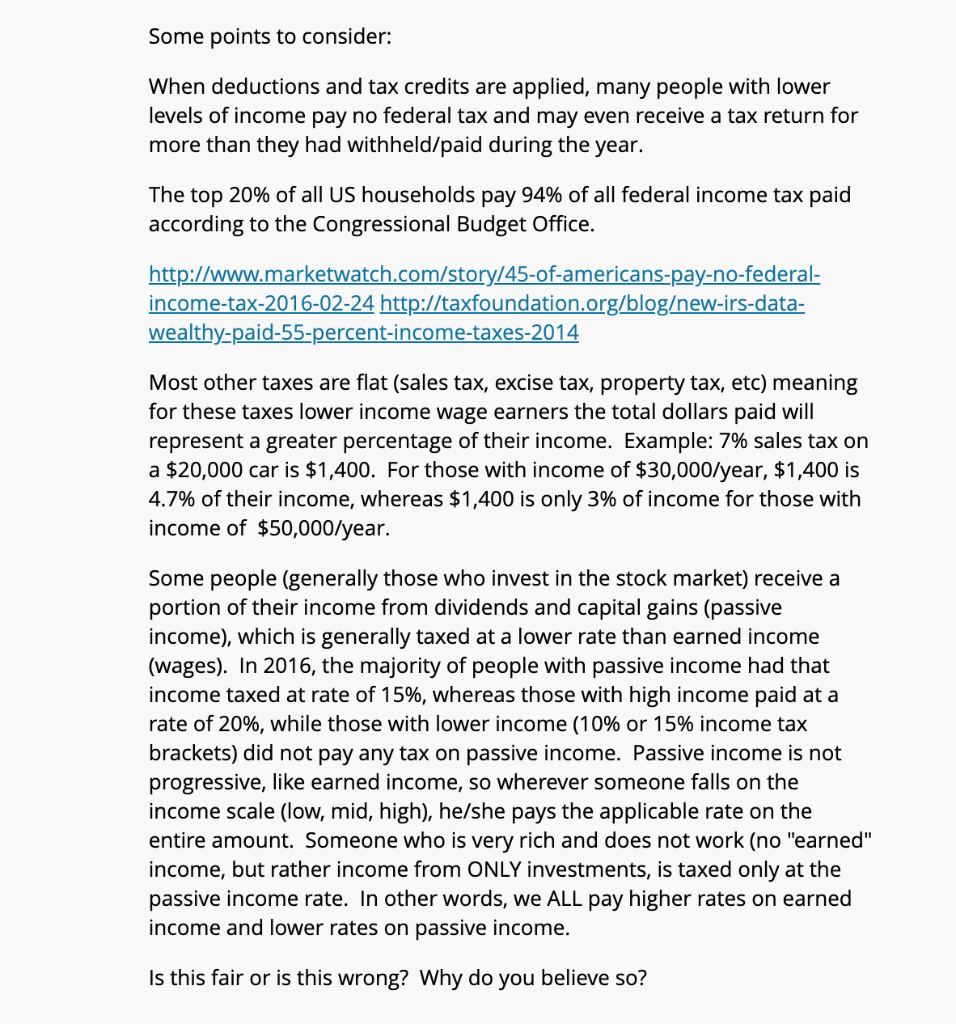Answered step by step
Verified Expert Solution
Question
1 Approved Answer
I would like to know what should be my discussion to this question. I would also like to have an explanation on why I believe

I would like to know what should be my discussion to this question. I would also like to have an explanation on why I believe so as well
Some points to consider: When deductions and tax credits are applied, many people with lower levels of income pay no federal tax and may even receive a tax return for more than they had withheld/paid during the year. The top 20% of all US households pay 94% of all federal income tax paid according to the Congressional Budget Office. http://www.marketwatch.com/story/45-of-americans-pay-no-federalincome-tax-2016-02-24 http://taxfoundation.org/blogew-irs-datawealthy-paid-55-percent-income-taxes-2014 Most other taxes are flat (sales tax, excise tax, property tax, etc) meaning for these taxes lower income wage earners the total dollars paid will represent a greater percentage of their income. Example: 7% sales tax on a $20,000 car is $1,400. For those with income of $30,000/ year, $1,400 is 4.7% of their income, whereas $1,400 is only 3% of income for those with income of $50,000/year. Some people (generally those who invest in the stock market) receive a portion of their income from dividends and capital gains (passive income), which is generally taxed at a lower rate than earned income (wages). In 2016, the majority of people with passive income had that income taxed at rate of 15%, whereas those with high income paid at a rate of 20%, while those with lower income ( 10% or 15% income tax brackets) did not pay any tax on passive income. Passive income is not progressive, like earned income, so wherever someone falls on the income scale (low, mid, high), he/she pays the applicable rate on the entire amount. Someone who is very rich and does not work (no "earned" income, but rather income from ONLY investments, is taxed only at the passive income rate. In other words, we ALL pay higher rates on earned income and lower rates on passive income. Is this fair or is this wrong? Why do you believe soStep by Step Solution
There are 3 Steps involved in it
Step: 1

Get Instant Access to Expert-Tailored Solutions
See step-by-step solutions with expert insights and AI powered tools for academic success
Step: 2

Step: 3

Ace Your Homework with AI
Get the answers you need in no time with our AI-driven, step-by-step assistance
Get Started


